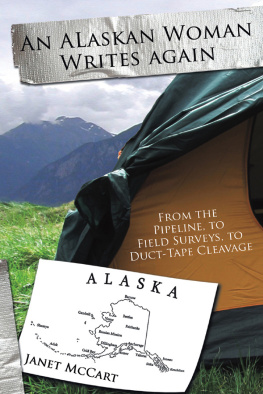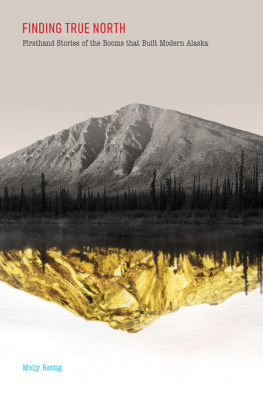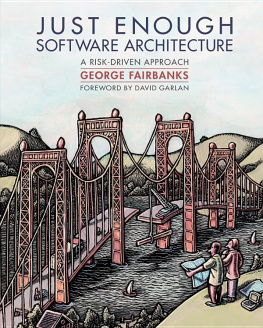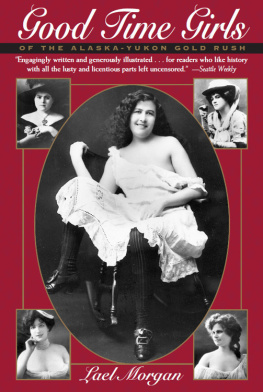What Happened to Fairbanks?
Social Impact Assessment Series
Charles P. Wolf, General Editor
What Happened to Fairbanks?
The Effects of the Trans-Alaska Oil Pipeline on the Community of Fairbanks, Alaska
Mim Dixon
When the Alaska pipeline was planned, it was generally assumed that Fairbanks--serving as a transportation, employment, and supply center--would reap many benefits. What Happened to Fairbanks?, the result of a two-year research project, is a close look at the actual effects of the pipeline construction on the community.
Mim Dixon worked with the unique community-directed Impact Information Center for two years and discovered that many of the expected changes never materialized. Dixon describes what Fairbanks was like during pipeline construction and how the community responded to the project, and she assesses the unplanned negative effects that, in many cases, outweighed the positive ones. The influx of outsiders who came seeking pipeline jobs drastically affected the city's ability to provide such vital services as housing, transportation, telephones, and electricity. Increases in prostitution and street fighting, decreasing family cohesiveness, and inflation caused by the high wages of pipeline workers contributed to Fairbanks' problems.
Dixon's conclusion is that official policy must require that resource development projects take responsibility for social effects and involve affected communities in planning for their futures. The author not only analyzes the failure of current planning models, but also offers a more comprehensive, more viable model. The book closes with discussion of the lessons that can be learned from Fairbanks' experience and their application to social science research.
Mim Dixon holds a Ph.D. in anthropology from Northwestern University. She has served as a consultant to the Joint Federal State Land Use Planning Commission and the State of Alaska Office of the Attorney General, and most recently as director of the community-directed research organization in Fairbanks established to monitor, study, and report the local effects of pipeline construction on the community.
Charles P. Wolf , general editor of the Social Impact Assessment Series, is associate professor in the environmental psychology program at the City University of flew York. He was formerly AAAS Congressional Science Fellow in the U.S. Office of Technology Assessment and worked for two years as a sociologist with the U.S. Army Engineers Institute for Water Resources.
What Happened to Fairbanks?
The Effects of the Trans-Alaska Oil Pipeline on the Community of Fairbanks, Alaska
Mim Dixon
First published 1978 by Westview Press
Published 2019 by Routledge
52 Vanderbilt Avenue, New York, NY 10017
2 Park Square, Milton Park, Abingdon, Oxon OX14 4RN
Routledge is an imprint of the Taylor & Francis Group, an informa business
Copyright 1978 by Taylor & Francis
All rights reserved. No part of this book may be reprinted or reproduced or utilised in any form or by any electronic, mechanical, or other means, now known or hereafter invented, including photocopying and recording, or in any information storage or retrieval system, without permission in writing from the publishers.
Notice:
Product or corporate names may be trademarks or registered trademarks, and are used only for identification and explanation without intent to infringe.
Library of Congress Number: 77-94011
ISBN 13: 978-0-367-21340-4 (hbk)
Social impact assessment (SIA) is a newly-emerging field of interdisciplinary social science knowledge and application. The analytic problem addressed by SIA is that of establishing and appraising the condition of a society organized and changed by large-scale applications of high technology. Its task is anticipatory research: to predict and evaluate the social effects of a policy, program, or project still in the planning stage, before these effects have occurred. It seeks to base expectations of legislative enactment, program operation, and project development on a rational and reliable basis.
The growing professional and scholarly interest in this field has created a demand for substantial treatment of its significant cases and salient dimensions. The Social Impact Assessment Series is designed to meet this need.
Charles P. Wolf
Two years of research preceded writing this monograph. From 1974 to 1976 I worked with the Fairbanks North Star Borough Impact Information Center, first as a research assistant and then as director. During that time, we produced for the local citizenry and other interested persons monthly reports and some special reports about changes in the community. To prepare these reports, we drew upon data collected by other agencies (such as traffic volume from the Alaska Department of Highways, arrests from the Fairbanks Police Department, and revenues from the Borough Comptroller). When figures were not available, we developed methods for obtaining them--using court records for the number of divorce complaints filed, surveying Senior Citizens and local pipeline employees, conducting regular food, fuel and rental housina price comparisons. To complement the quantitative data, we interviewed scores of people, attended public hearings and other meetings, and relied upon the news media.
Most research methods have been explained in the chapter notes. One very important component of the research method, however, requires additional explanation for those net familiar with the Impact Information Center. Each of the Impact Information Center reports was reviewed by the Impact Advisory Committee, a group of Fairbanks residents representing the Chamber of Commerce, the Social Concerns Committee, the Borough Assembly, organized labor, Natives, Blacks, womenjust about every interest group in the community. The meetings were open to the public and the press, and reports were available to all who wanted them free of charge. Data collected by the Impact Information Center were subjected to public scrutiny and improved by public criticism. Because the program was funded through local revenues, there was tremendous public participation, particularly at budget time. In this monograph, I have only referenced the Impact Information Center Reports in the chapter notes when I did not conduct the research myself or when I felt that an Impact Information Center report would provide additional relevant information.
As an applied anthropologist, I believe that this unique community-directed program (which incidentally received an Outstanding Achievement Award from the National Association of Counties) provided an ideal research setting. However, political constraints prohibited interpreting the data in the Impact Information Center reports. While the data presented in the manuscript has undergone broad public review, the interpretations of that data have not benefited by that process. Interpretations and analysis reflect not only my experiences with the Impact Information Center, but also my training as an anthropologist and my participation and observations of Fairbanks during the past seven years.







